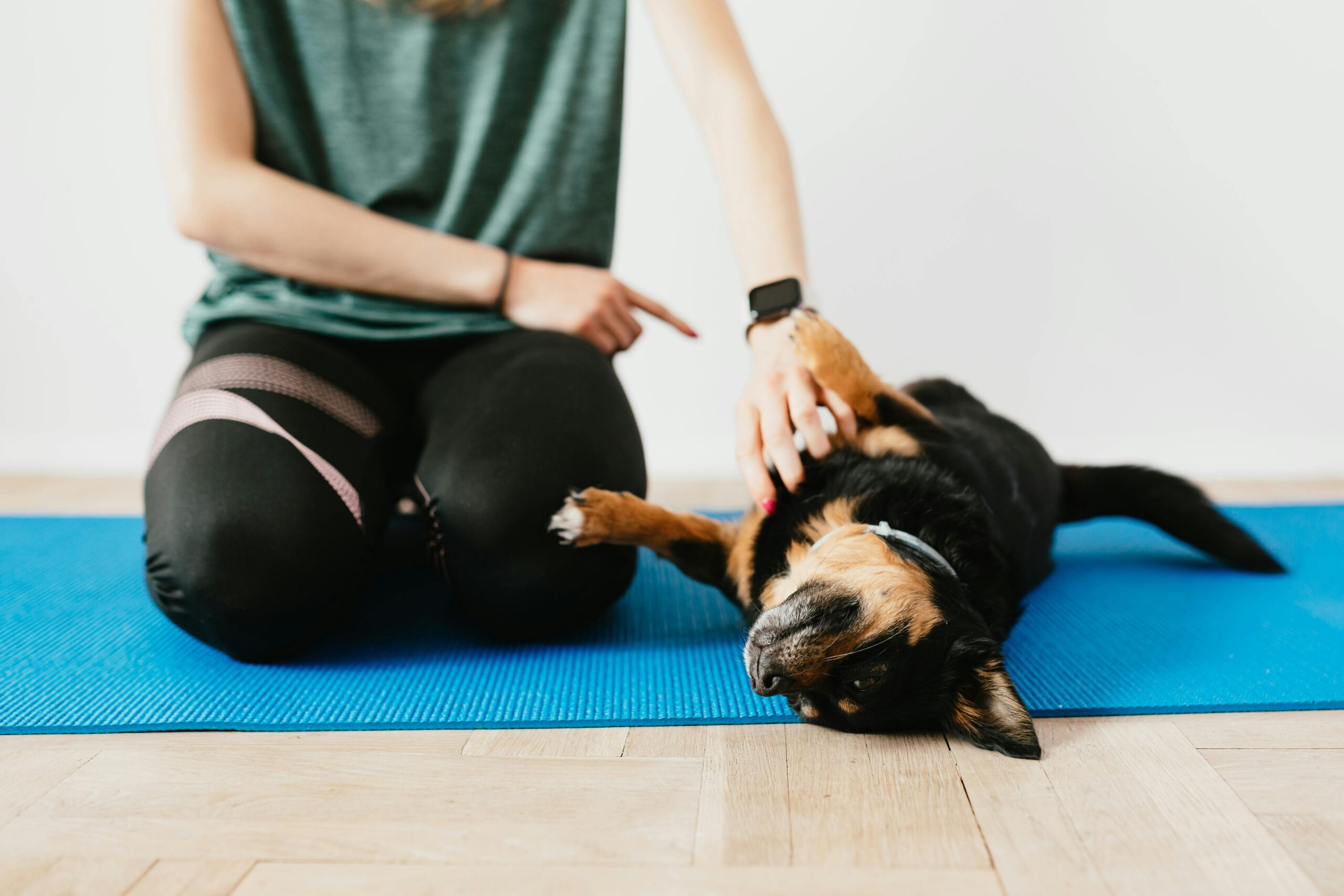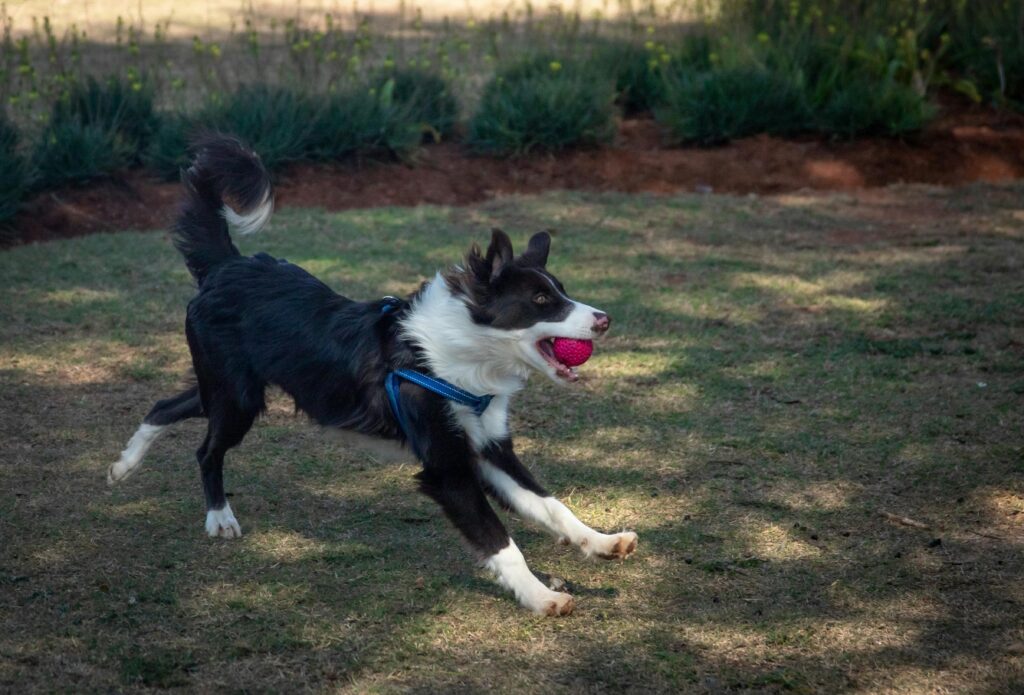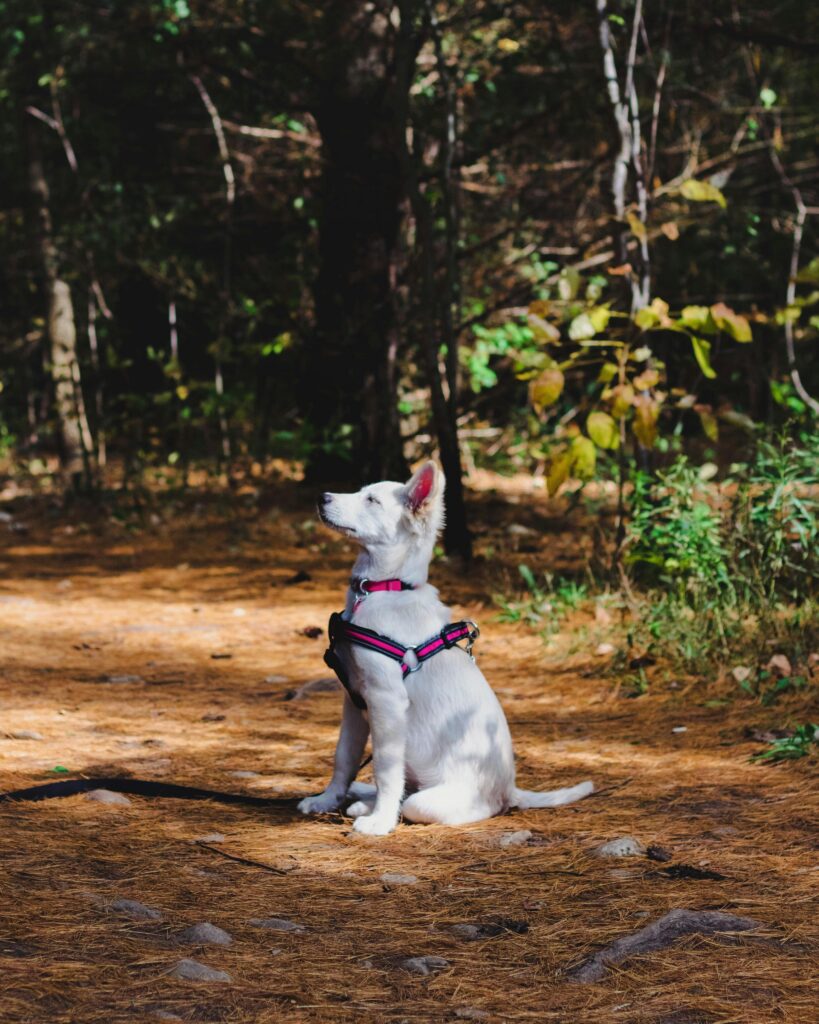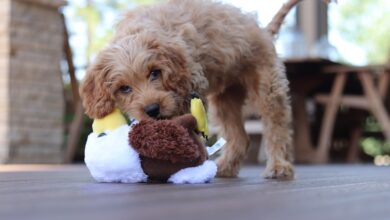Unleashing the Secrets of Dog Training: Tips and Tricks for a Well-Behaved Pup

Dog training is an essential aspect of responsible pet ownership. It not only helps to ensure the safety and well-being of your furry friend but also strengthens the bond between you and your canine companion. In this comprehensive guide, we will explore the various aspects of dog training, from choosing the right training method to addressing common behavioral issues and continuing your dog’s education. Whether you are a first-time dog owner or have had dogs for years, this article will provide you with valuable insights and practical tips to help you train your dog effectively.

Key Takeaways
- Dog training is important for a well-behaved pup and a strong bond with your furry friend.
- Choosing the right training method and setting realistic goals are crucial for success.
- Basic commands like sit, stay, come, and heel are essential for obedience.
- Positive reinforcement techniques and incorporating play and exercise can encourage good behavior.
- Socializing your dog and addressing separation anxiety are important for a happy and confident pup.
Understanding the Importance of Dog Training
Training your dog has numerous benefits, both for the dog and the owner. For the dog, training provides mental stimulation, helps prevent behavioral problems, and promotes good manners. A well-trained dog is more likely to be welcomed in public places and can enjoy a higher quality of life. For the owner, training creates a harmonious living environment, enhances communication with the dog, and fosters a sense of pride and accomplishment.
However, there are some common misconceptions about dog training that need to be addressed. Some people believe that training is only necessary for dogs with behavioral issues or working dogs. In reality, all dogs can benefit from training, regardless of their breed or background. Additionally, some may think that training involves harsh punishment or dominance-based techniques. This is far from the truth. Positive reinforcement-based methods are widely recognized as the most effective and humane way to train dogs.
Choosing the Right Training Method for Your Dog
When it comes to training methods, there are several options available, including positive reinforcement, clicker training, and dominance-based techniques. Positive reinforcement focuses on rewarding desired behaviors rather than punishing unwanted ones. Clicker training utilizes a clicker as a marker to signal correct behavior and reinforce it with rewards. Dominance-based techniques rely on establishing yourself as the “alpha” and using punishment to correct behavior.
When choosing a training method, it is important to consider your dog’s personality, temperament, and individual needs. Some dogs respond better to positive reinforcement, while others may require a more structured approach. It is also crucial to take into account your own comfort level and ability to implement the chosen method consistently. Consulting with a professional dog trainer can provide valuable guidance in selecting the most suitable training method for your dog.
Setting Realistic Training Goals
| Specificity | Number of specific goals set |
| Measurability | Number of measurable goals set |
| Achievability | Number of achievable goals set |
| Relevance | Number of relevant goals set |
| Time-bound | Number of time-bound goals set |
| Progress Tracking | Number of progress tracking methods used |
| Feedback | Number of feedback mechanisms used |
Setting realistic training goals is essential for both you and your dog’s success. It is important to remember that dogs learn at their own pace, and progress may vary depending on various factors such as age, breed, and previous experiences. Setting achievable goals helps to maintain motivation and prevents frustration.
When setting goals, it is crucial to make them specific, measurable, and realistic. For example, instead of setting a vague goal like “teach my dog to come when called,” a more specific goal would be “teach my dog to come when called within 5 seconds in a distraction-free environment.” This allows you to track progress and adjust your training approach accordingly. Breaking down larger goals into smaller, manageable steps can also make the training process more effective and less overwhelming.
Building a Strong Bond with Your Canine Companion
Training provides an excellent opportunity to strengthen the bond between you and your dog. By spending quality time together and engaging in positive interactions, you can build trust, understanding, and mutual respect. A strong bond enhances communication and cooperation, making the training process smoother and more enjoyable for both of you.
To build a strong relationship with your dog, it is important to prioritize positive experiences. Incorporate playtime, cuddling, and interactive games into your daily routine. Take time to understand your dog’s needs, preferences, and body language. Show patience, consistency, and kindness in your interactions. Remember that building a bond takes time and effort but is ultimately rewarding for both you and your furry friend.

Teaching Basic Commands: Sit, Stay, Come, and Heel
Teaching your dog basic commands is an essential part of training. These commands provide the foundation for good manners and ensure your dog’s safety in various situations. Here is a step-by-step guide for teaching each command:
1. Sit: Hold a treat close to your dog’s nose and slowly move it upwards, causing their head to follow the treat and their bottom to lower. Once they are in a sitting position, say “sit” and reward them with the treat.
2. Stay: Start with your dog in a sitting position. Hold your hand up, palm facing towards them, and say “stay.” Take a step back and reward them if they remain in place. Gradually increase the distance and duration of the stay.
3. Come: Attach a long leash to your dog’s collar. Crouch down, open your arms, and enthusiastically call their name followed by “come.” Gently reel them in if necessary and reward them when they reach you.
4. Heel: Begin walking with your dog on a leash by your side. Use a verbal cue like “heel” and reward them for walking calmly beside you. If they start to pull or stray, stop walking and wait for them to return to your side before continuing.
Avoid common mistakes such as using force or punishment, getting frustrated, or expecting instant results. Consistency, positive reinforcement, and patience are key to successful command training.
Addressing Common Behavioral Issues: Barking, Chewing, and Jumping
Behavioral issues such as excessive barking, destructive chewing, and jumping can be frustrating for dog owners. Understanding the underlying causes of these behaviors is crucial for effective resolution.
Barking is a natural form of communication for dogs but can become problematic when it occurs excessively or in response to minor stimuli. It is important to identify the triggers and address them appropriately. Providing mental and physical stimulation, teaching the “quiet” command, and rewarding calm behavior can help reduce excessive barking.
Chewing is a normal behavior for dogs, especially puppies who are teething. However, destructive chewing can be a sign of boredom, anxiety, or lack of appropriate chew toys. Providing plenty of chew toys, engaging in interactive play, and ensuring regular exercise can help redirect chewing behavior.
Jumping is often a result of excitement or seeking attention. To address this issue, it is important to teach your dog an alternative behavior such as sitting or offering a paw. Consistency in rewarding the desired behavior and ignoring or redirecting jumping can help discourage this unwanted behavior.
Remember that addressing behavioral issues requires patience, consistency, and understanding. If the problems persist or worsen, consulting with a professional dog trainer or behaviorist can provide specialized guidance.
Using Positive Reinforcement Techniques to Encourage Good Behavior
Positive reinforcement is a powerful training technique that focuses on rewarding desired behaviors rather than punishing unwanted ones. It involves using rewards such as treats, praise, and play to reinforce behaviors you want to see more of.
The key to effective positive reinforcement is timing. The reward should be given immediately after the desired behavior occurs to create a clear association between the behavior and the reward. Start with high-value rewards such as tasty treats and gradually transition to intermittent reinforcement to maintain motivation.
Consistency is also crucial in positive reinforcement training. Reward your dog every time they exhibit the desired behavior initially, gradually fading out the rewards as the behavior becomes more reliable. However, occasional surprise rewards can help maintain the learned behaviors in the long run.
It is important to note that positive reinforcement does not mean ignoring unwanted behaviors. Instead, it focuses on redirecting and reinforcing alternative behaviors that are incompatible with the unwanted ones. For example, if your dog jumps on guests, teach them to sit instead and reward them for sitting calmly.
Incorporating Play and Exercise into Your Dog’s Training Routine
Play and exercise are vital for a well-behaved and happy dog. Regular physical activity helps to release excess energy, prevent boredom, and promote overall health. Incorporating play and exercise into your dog’s training routine can make the training process more enjoyable and effective.
Engage in interactive games such as fetch, tug-of-war, or hide-and-seek to provide mental stimulation and strengthen the bond between you and your dog. Use toys that encourage problem-solving and reward-based play. Additionally, consider incorporating structured activities such as agility training or obedience competitions to challenge your dog’s skills and provide a sense of accomplishment.
Remember to tailor the intensity and duration of exercise to your dog’s age, breed, and physical condition. Consult with your veterinarian to ensure that your dog’s exercise routine is appropriate for their individual needs.
Socializing Your Dog: Tips for Meeting New People and Other Dogs
Socialization is a crucial aspect of dog training that helps them become well-adjusted and confident in various social situations. Early socialization is particularly important during the critical period between 3 and 14 weeks of age when puppies are most receptive to new experiences.
To socialize your dog effectively, expose them to a wide range of people, animals, environments, sights, sounds, and smells in a positive and controlled manner. Start with low-stress environments and gradually increase the level of difficulty. Use treats, praise, and play to create positive associations with new experiences.
When introducing your dog to new people or dogs, ensure that the interactions are calm and controlled. Avoid forcing them into uncomfortable situations or overwhelming them with too many stimuli at once. Monitor their body language for signs of stress or fear and intervene if necessary.
Remember that socialization is an ongoing process that should continue throughout your dog’s life. Regular exposure to new experiences and positive interactions will help your dog become a well-rounded and confident companion.
Dealing with Separation Anxiety: Strategies for a Calm and Confident Pup
Separation anxiety is a common behavioral issue in dogs that can manifest as excessive barking, destructive behavior, or house soiling when left alone. It is important to address separation anxiety to ensure your dog’s well-being and prevent damage to your home.
The causes of separation anxiety can vary, including past traumatic experiences, lack of proper socialization, or a sudden change in routine. To help your dog feel more comfortable when left alone, consider the following strategies:
1. Gradual desensitization: Start by leaving your dog alone for short periods and gradually increase the duration over time. Pair these absences with positive experiences such as treats or interactive toys to create positive associations with being alone.
2. Create a safe space: Provide a designated area where your dog feels secure and comfortable when you are away. This can be a crate, a specific room, or an area with their bed and favorite toys.
3. Counter-conditioning: Teach your dog to associate your departure cues (e.g., picking up keys) with positive experiences rather than anxiety. Practice these cues without actually leaving and reward calm behavior.
4. Seek professional help: If your dog’s separation anxiety is severe or persists despite your efforts, consult with a professional dog trainer or behaviorist who specializes in separation anxiety. They can provide personalized guidance and develop a tailored treatment plan for your dog.
Continuing Your Dog’s Education: Advanced Training Techniques and Activities
Once your dog has mastered the basic commands, there are numerous advanced training techniques and activities you can explore to continue their education and provide mental stimulation.
Some examples of advanced training techniques include teaching tricks such as roll over, play dead, or fetch specific objects by name. You can also introduce more complex obedience exercises such as off-leash heeling, distance commands, or scent detection.
In addition to advanced training, there are various activities you can engage in with your dog to challenge their skills and provide enrichment. These can include agility training, nose work, flyball, or even participating in dog sports such as obedience trials or dock diving.
Continuing your dog’s education not only keeps their mind sharp but also strengthens the bond between you and your furry friend. It provides an opportunity for ongoing learning and growth, ensuring that your dog remains mentally and physically stimulated throughout their life.
In conclusion, dog training is a vital aspect of responsible pet ownership that benefits both the dog and the owner. It strengthens the bond between you and your canine companion, promotes good manners, prevents behavioral problems, and enhances communication. By understanding the importance of training, choosing the right method, setting realistic goals, and addressing common behavioral issues, you can create a harmonious and fulfilling relationship with your dog.
Remember that training requires patience, consistency, and positive reinforcement. It is an ongoing process that should be tailored to your dog’s individual needs and preferences. By incorporating play, exercise, socialization, and continued education into your dog’s training routine, you can ensure their well-being and happiness for years to come. Start training your dog today and enjoy the journey of building a strong bond with your furry friend.
FAQs
What is dog training?
Dog training is the process of teaching a dog to perform certain behaviors in response to specific commands. It involves using positive reinforcement techniques to encourage good behavior and discourage bad behavior.
Why is dog training important?
Dog training is important for several reasons. It helps to establish a bond between the dog and its owner, improves communication between them, and ensures that the dog is well-behaved and obedient. It also helps to prevent behavioral problems and can make the dog more sociable and confident.
What are some basic dog training commands?
Some basic dog training commands include sit, stay, come, heel, and down. These commands are essential for teaching a dog to behave properly and respond to its owner’s commands.
What are some tips for successful dog training?
Some tips for successful dog training include being consistent, using positive reinforcement techniques, keeping training sessions short and frequent, and being patient and persistent. It’s also important to understand your dog’s personality and behavior and tailor your training approach accordingly.
What are some common mistakes to avoid when training a dog?
Some common mistakes to avoid when training a dog include using punishment or negative reinforcement techniques, being inconsistent with commands and rewards, expecting too much too soon, and not understanding your dog’s behavior and needs. It’s important to be patient and consistent and to seek professional help if needed.



